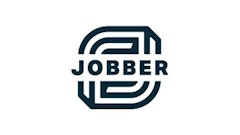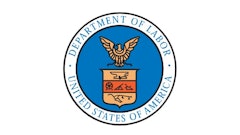
Is it comforting to know CEOs and top managers of some of the most successful businesses struggle to understand basic accounting principles? Playing the numbers game is a privilege reserved for certified public accountants (CPAs) and other people whose job it is to do so—or so conventional thought tells us. In truth, your business’ finances matter a great deal to many people both within and outside it, individuals who do not have accounting degrees or formal financial training, but who depend on the success of your business from day to day, month to month, quarter to quarter and year to year.
Being able to speak a common language about finances is critical to the growth and continued health of your business. It is important to have a means of reporting, analyzing and interpreting the data in ways that make sense to everyone invested in its operations. Here are five impactful ways you can increase your and your team’s financial intelligence, and boost your organization’s bottom line.
1. Embrace Dual Personalities
Landscaping is an art. It takes a keen eye and skilled hands to bring the customer’s vision to life. It also requires a deep understanding of the science behind landscaping, such as pH levels, soil composition, and the impact of weather on specific plant life and building materials. Did you know the finances associated with your landscaping business are also equal parts art and science? Rarely in accounting are the numbers as black and white as they appear on the page or computer screen. It’s important to be both an artist and a scientist when looking at the financial state of your business so you always know how much money it has at its disposal on a given day to fund operations, pay down debt and invest in growth.
2. Make Reasonable Assumptions
Financial intelligence may require you to be one part artist and one part scientist, but managing your company’s finances requires level-headedness and a practical approach. Unlike the artist painting on canvas, it cannot be haphazard or spontaneous. Poor financial decisions or premature judgments about the state of your company’s finances can adversely and dramatically affect its profits. Additionally, they can negatively impact budgets, capital expenditures, staffing, operational matters, and many other tangible and intangible areas of your business. Making reasonable assumptions about the financial state of your business is critical. It shows forethought and care, which results in greater stability and profitability.
3. Get Honest about Profits
Profit is not the same as cash. But why? First and foremost, profit is based on promises of money coming in, not the actual inflow of money. Profits are not real money, but only a representation of current situations in the business. Cash, on the other hand, can represent current, historic and future situations related to the business. A good rule of thumb when determining the difference between profit and cash is this: Cash flow always reflects cash transactions. If a transaction does not involve the physical exchange of cash, it cannot be considered available cash.
4. Prioritize Cash Flow
You’ve heard it before: Revenue is vanity, profit is sanity, but cash is king. Cash is especially critical in small businesses and proprietorships, because these entities are at the highest risk of failing due to cash shortages. Long ago, people bartered for goods and services by exchanging items of value. These days, money represents items of value, but the principle of trade is still relevant. At times, it is vital to preserve as much available cash as possible to sustain the business. This makes prioritizing cash flow a non-negotiable if you hope for your business to come out of the other side of unforeseen circumstances, economic downturns, and delinquent and non-paying customers unscathed. Preserving valuable cash also ensures you can maintain strong relationships with vendors and suppliers, all of whom are trying to preserve their own available cash.
5. Be Predictive and Proactive
Virtually all the obstacles that threaten the vitality, longevity and profitability of your business can be mitigated and even overcome simply by planning and thinking ahead. One of the best tools for predictive thinking and strategizing is the cash flow forecast. Like much of the accounting for your business, cash flow forecasting is not an exact science. While the data on the cash flow statement plays an integral role in determining the predictions you make about future performance, it is only part of the equation. Estimates and assumptions based upon past and current data, external events and market trends are also essential for developing a cash flow forecast that accounts for all the realities and potential realities your business has faced or could face.
You don’t have to be a CPA or professional bookkeeper to know the value of numbers in running a business. Keeping a level head and a critical eye when scrutinizing the numbers, and taking measures to consistently preserve cash flow are essential for the continued health and growth of your business. What predictions can be made about your company’s financial future simply by analyzing the current numbers in your business and making reasonable assumptions? What other immediate measures can you take that can give you the most accurate picture of your business’s performance?





























